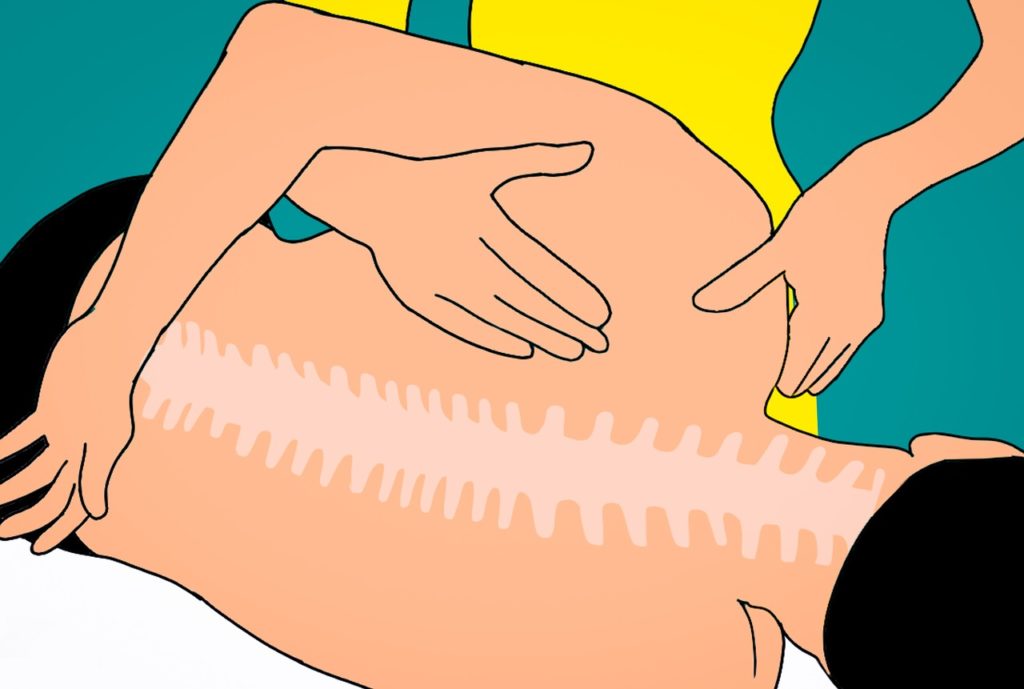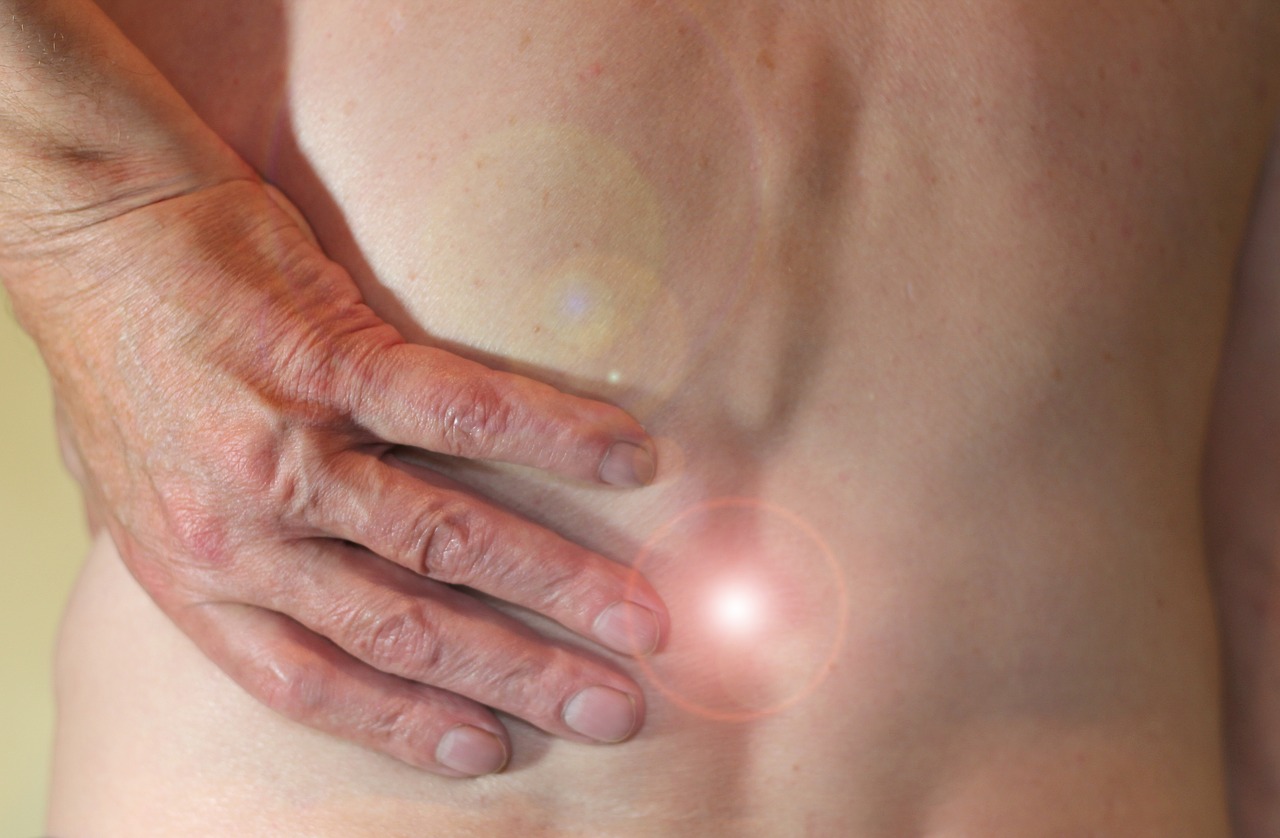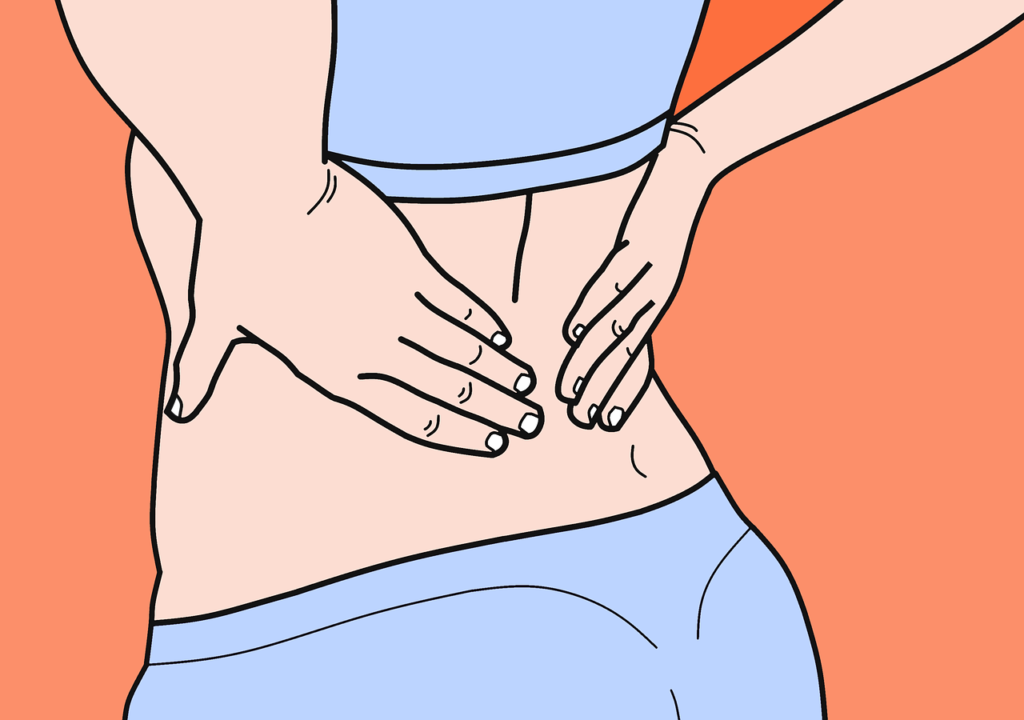Sciatica – you’ll know if you have it, but what can you do about it? IDD Therapy for sciatica is growing in popularity. Read below ……
There are medical conditions a person can have but be completely unaware of. Sciatica isn’t one of them. Whether you feel it a dull ache, or as a shooting pain or as numbness, if you have sciatica, you know something isn’t right.
So, what exactly is sciatica?
What Is Sciatica?
Electrical signals control your body. Your nerves transmit these to all areas of your body. Your nerves branch off from your spinal cord, exiting your spinal column at every level. And the largest nerve in your body is formed by five nerve roots. This is the sciatic nerve, which exits the lower part of the spinal column and branches out into smaller nerves. These then control the bottom half of your body. Think of them as electrical wires running through your legs and buttocks.
When something interrupts or irritates those nerves, a pain signal is delivered to your brain. That is sciatica.
Doubtless, at least once in your life, you will have experienced pain that comes and goes, but sciatica is often constant.
In many cases sciatic nerve pain will subside—the body’s ability to heal itself is incredible—but sometimes the pain doesn’t pass. The good news is that there are a variety of options to treat this. These treatments range from medication to non-invasive IDD Therapy disc treatment, and we’ll look at these after we identify the causes of sciatica.
Causes of Sciatica
The origins of sciatica are in the lower back. Your spine is basically a stack of bones (vertebrae). Between your vertebrae there are cushion-like discs (or intervertebral discs) and when you move, these act as spongy shock absorbers. These discs are extremely important: they create a gap between the solid vertebrae, and the gaps create space for your nerves to pass as they branch off from the spinal cord.
There are two main issues which can affect the nerves:
Disc problems. Your discs have a strong outer wall made of tough fibrous collagen. Inside each disc is a gel-like substance with a high water content that provides shock absorbing properties.
A bulging or herniated disc can press on the nerve or cause chemical irritation to the nerve, and this results in pain.
Narrowing between the vertebrae. If the gap between vertebrae in the lower back narrows, this can reduce the space for the nerve. If there is pressure on the nerve, the result can be sciatic pain.
Loss Of Disc Height
Loss of disc height can be an issue. Over time discs lose water, thereby losing height and narrowing the gap between the vertebrae. This can pinch a nerve.
Loss of disc height can cause the body to add more bone to a vertebra to strengthen it. The disc carries a certain proportion of our bodily load. If there is an issue with the disc and it takes less of the weight, then more load is placed on to your bones.
In order to support the additional load, the body reinforces the vertebra by adding more bone. That additional bone can lead to a loss of space for the nerves. This is spinal stenosis. With less space for the nerve they can again become pinched and the nerve pressure causes pain.
Treatment Options For Sciatica
INJECTIONS
There are different types of injection which can reduce inflammation.
Inflammation is a natural process of healing, but after prolonged periods, the inflammation itself can become an issue, excessively irritating nerves and causing pain. A steroid injection can help neutralise the inflammation and relieve pain.
Note: corticosteroids for pain relief are different from anabolic steroids, which are performance-enhancing drugs.
Injections are usually given to create a pain-free window, whereas the following treatments address the causes of the problem.
MANUAL THERAPY
Manual therapists will use a range of stretching and mobilisation techniques to increase the flexibility of the soft tissues and alleviate the stiffness in the joint. Pain creates a vicious cycle where the sufferer can’t move but it is the movement which is so important for the cure.
The goal is to create some movement in the spine and to unload the disc and the joints. Sometimes the soft tissues even become stuck together (adhesions) which prevents movement. Part of the manual therapy and stretching will aim to address that.
 IDD Therapy For Sciatica
IDD Therapy For Sciatica
Intervertebral Disc Decompression is a non-surgical spinal decompression treatment. When manual therapy has been used but pain from a bulging or herniated disc persists, therapists use IDD Therapy as a tool to help take pressure off targeted discs and to gently mobilise the patient’s spine. IDD therapy for sciatica is particularly effective.
IDD Therapy is a mechanical tool that has replaced old-style traction. Each treatment in a series lasts for 45 minutes to one hour, with 25 minutes spent on the IDD Therapy or Accu SPINA machine. Using computer-controlled pulling forces, this therapy opens the space between the vertebrae to decompress the disc and gently mobilise the soft tissues and joints with soft oscillation. The aim is to relieve pain and to help restore movement. Patients remain fully clothed and completely relaxed throughout.
IDD Therapy for sciatica is combined with some other modalities, such as heat, and is provided in combination with manual therapy and strengthening exercises as part of a programme of care.
Surgery For Sciatica
Where the pain is intolerable and has not responded to non-invasive treatments, or where the pressure on the nerve is such that it is causing weakness (usually in the legs or, in very extreme cases, a loss of bladder or bowel control), surgery is the preferred treatment.
If a disc in the spine has herniated, this means the centre (or nucleus) of the disc has pushed out through the walls of the disc. This can be only a small amount, or it can be substantial. Usually the body can reabsorb this disc material, however if it remains, it can become hard and leave patients in constant pain.
The most common surgery is a microdiscectomy. This surgery involves a small incision in the lower back to remove the piece of disc material.
In cases where the space the nerve lies in has narrowed, other forms of decompression surgery can be used. Small pieces of bone are removed to create space for the nerve; or bone pressing on the nerve is removed.
Urgent surgery: Where a patient is experiencing weakness in their legs, this is a more serious proposition and usually surgery will be considered early. Weakness or a loss of leg power can mean that the nerve is at risk of damage, making relieving the pressure quickly very important. Surgery is also usually a priority if there is a loss of bowel or bladder function.
Summary
Your discs support your weight and allow you to move freely. They rely on movement to stay healthy and function as a unit with your muscles and ligaments.
Weakness and stiffness in the soft tissues can mean that there’s an increased load on the disc and vertebrae. Combine that with exposure to load for long periods, most commonly from poor posture and lengthy periods of sitting, it can put more strain the discs.
Long periods of sitting usually go hand in hand with lower activity levels. This is a cause of the weakness in the muscles and leaves them less able to take their share of the support.
Staying mobile, keeping active and avoiding prolonged sitting are key to looking after your back and keeping sciatica at bay.
By Dan Plev, Consultant Spinal Neurosurgeon, The London Clinic
Dan Plev is a Consultant Spinal Neurosurgeon and IDD Therapy provider at The London Clinic in Harley Street, London.
‘Intervertebral Disc Decompression” or IDD Therapy is the fastest growing non-surgical spinal treatment for intervertebral discs with over 1,000 clinics worldwide and a network of clinics across the UK. Safe, gentle and non-invasive, IDD Therapy helps patients who need something more for their pain when manual therapy alone is insufficient to achieve lasting pain relief.






